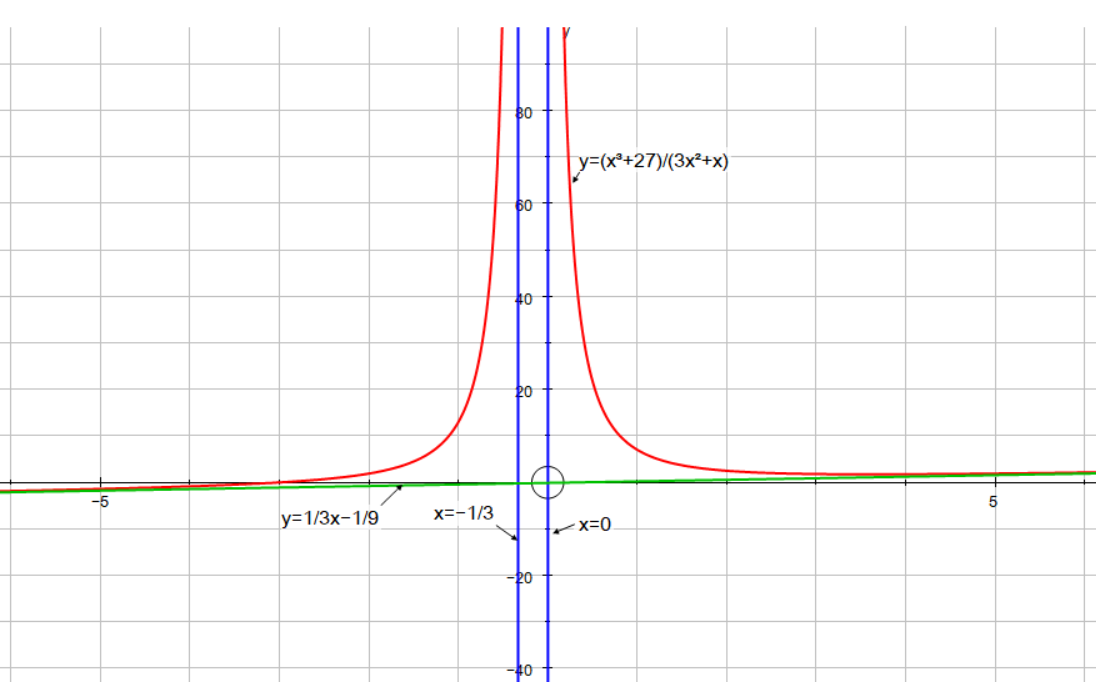How do you graph #y=(x^3+27)/(3x^2+x)# using asymptotes, intercepts, end behavior?
1 Answer
See below.
Explanation:
(This is undefined, so no y axis intercept)
(This will also have complex roots, but these will be of no help in graphing).
Point:
Vertical asymptotes occur where the function is undefined. i.e.
Asymptotes are the lines:
Because the rational function is an improper fraction ( degree of numerator is higher than degree of denominator) an oblique asymptote occurs. The can be found by dividing numerator by denominator.
( we only need to divide enough to give us the terms of a line equation)
So the line:
End behaviour:
as
as
Graph:


